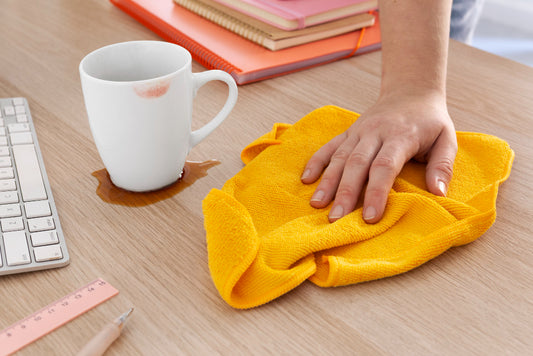As we effortlessly glide our modern mops across our floors, it's easy to take for granted the evolution of these humble cleaning tools. The history of mops is a journey through time, reflecting advancements in materials, technology, and our understanding of cleanliness. In this enlightening exploration, we'll delve into the fascinating history of mops and witness how they have transformed from basic cleaning aids to the efficient, specialized tools we know today.
1. The Ancient Origins of Cleaning:
Primitive Broom-Like Tools:
- The earliest evidence of floor cleaning dates back to ancient civilizations, where broom-like tools were crafted from natural materials such as twigs, straw, or branches. These rudimentary tools served the purpose of sweeping dirt and debris from living spaces.
2. The Renaissance Era: Innovations in Cleanliness:
Mops Enter the Scene:
- As the Renaissance era dawned, so did innovations in cleanliness. The first semblance of what we now recognize as a mop emerged during this time. These early mops consisted of absorbent materials, often rags or strips of fabric, attached to a handle. They were manually dipped in water or cleaning solutions and then used to scrub and wipe floors.
3. The 19th Century: The Birth of the Modern Mop:
Rise of the String Mop:
- The 19th century witnessed significant advancements in cleaning tools, marking the birth of the modern mop. The introduction of the string mop, featuring a head made of cotton or other absorbent materials, revolutionized the efficiency of floor cleaning. This design allowed for better absorption and improved coverage.
4. The Mid-20th Century: Mop Innovation Accelerates:
Sponge Mops and Synthetic Materials:
- The mid-20th century brought about the introduction of the sponge mop, a revolutionary design that replaced traditional absorbent materials with synthetic sponges. This innovation provided a more resilient and efficient cleaning tool. The use of synthetic materials also made the mop more durable and resistant to wear.
Self-Wringing Mechanisms:
- Another milestone in mop evolution during this period was the incorporation of self-wringing mechanisms. This innovation allowed users to wring out excess water without the need for manual effort, making the mopping process more convenient and less physically demanding.
5. Late 20th Century to Present: Specialization and Technological Advancements:
Microfiber Mops Take Center Stage:
- In recent decades, microfiber technology has become a game-changer in the world of mops. Microfiber mops, with their tiny fibers that effectively capture and trap dirt, dust, and bacteria, have become synonymous with efficient and hygienic cleaning. Microfiber's ability to clean without the need for harsh chemicals has also contributed to a more eco-friendly approach to floor maintenance.
Steam Mops:
- The 21st century introduced the era of steam cleaning with the advent of steam mops. These innovative tools utilize the power of steam to sanitize and clean floors, offering a chemical-free and highly effective solution. Steam mops are particularly popular for their ability to eliminate bacteria and allergens, making them ideal for households with health-conscious individuals.
Spin Mops and Automated Cleaning Devices:
- The evolution of mops has extended beyond manual cleaning with the introduction of spin mops and automated cleaning devices. Spin mops feature rotating heads or brushes, providing an additional scrubbing action to dislodge stubborn dirt. Automated cleaning devices, ranging from robotic vacuums to mopping robots, have further transformed the landscape of household cleaning.
6. Mops in the Future: Sustainability and Smart Cleaning:
Green Cleaning:
- The future of mops is likely to be shaped by a growing emphasis on sustainability. Manufacturers are exploring eco-friendly materials and designs that minimize environmental impact, catering to the increasing demand for green cleaning solutions.
Smart Cleaning Technologies:
- The integration of smart technologies is another avenue for the future of mops. From app-controlled cleaning schedules to sensors that detect and target specific areas, smart cleaning technologies are poised to enhance the efficiency and convenience of floor maintenance.
The journey of mops from primitive broom-like tools to the sophisticated cleaning marvels of today is a testament to human ingenuity and our quest for cleanliness. As we stand at the threshold of the future, the evolution of mops continues, driven by a commitment to efficiency, hygiene, and sustainability. The next time you wield a mop to keep your floors spotless, take a moment to appreciate the remarkable history and the innovative strides that have brought us to the present-day cleaning tools we rely on. The story of mops is not just a tale of utility; it's a narrative of how we, as a society, have continually strived for cleaner, healthier living spaces.




